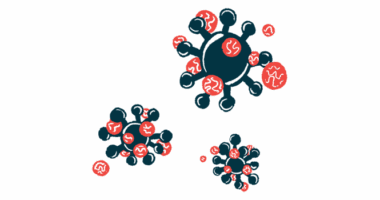Agrimonolide shows benefits in cholestasis mouse model
Study: Chinese herb compound eased liver damage, scarring, inflammation

Agrimonolide, a molecule found in a traditional Chinese herb, eased liver damage, scarring, and inflammation in a mouse model of cholestasis, a study showed.
The compound exerted its therapeutic effects by modifying the activity of the transporter proteins responsible for moving bile acids out of cells. Bile acids are the main components of bile, a digestive fluid produced in the liver and transported to the small intestine.
Overall, agrimonolide “has therapeutic potential in cholestatic liver diseases … through the [suppression] of bile acid excretion transporters,” researchers wrote.
Still, the scientists indicated that more studies are needed to confirm the compound’s safety and efficacy.
The study, “Agrimonolide from Agrimonia pilosa Ledeb attenuates cholestatic liver injury and macrophage infiltration via the inhibition of bile acid excretion transporters,” was published in International Immunopharmacology.
Agrimonolide used in traditional Chinese medicine to treat liver disease
In cholestasis, the flow of bile through the bile ducts, or the series of tubes that carry it from the liver to the small intestine, is stalled. Bile acids consequently accumulate to toxic levels in the liver, damaging the organ and contributing to a range of possible symptoms.
People with chronic cholestatic liver diseases, such as primary biliary cholangitis and primary sclerosing cholangitis, have limited treatment options.
Various naturally occurring substances can modulate bile acid production, metabolism, and transport. These could potentially be leveraged to develop new cholestasis treatments.
Agrimonolide is a compound mainly found in the herb Agrimonia pilosa Ledeb, which has been used for centuries in traditional Chinese medicine to treat liver, gallbladder, and inflammatory diseases. Previous studies indicate that agrimonolide exerts liver-protective, anti-inflammatory, and antioxidant effects.
In the recent study, a team of scientists in China further tested the therapeutic benefits of agrimonolide in a mouse model of induced cholestatic liver injury. The model is characterized by weight loss, liver enlargement, increased infiltration of immune cells in the liver, and elevated levels of liver injury biomarkers in the blood.
About one month of daily agrimonolide treatment eased all these disease features. Treated mice also showed a significant reduction in key features of liver disease progression, including liver scarring (fibrosis), inflammation, and ductal proliferation, a response to liver damage in which bile duct cells grow excessively.
Treatment with agrimonolide also significantly lowered bile acid accumulation in the blood and liver, and normalized blood levels of liver enzymes, which are usually high in liver disease.
Benefits appear related to compound’s effects on bile acid transporters
Additional experiments indicated that agrimonolide likely exerts its therapeutic effects by normalizing bile acid metabolism and transport, which were dysregulated in the mouse model.
The treatment was specifically associated with increases in transporter proteins that move bile acids out of liver cells and into bile, and decreases in those that transport bile acids from the intestine into the bloodstream to return them to the liver, where they can be recycled. Additionally, transporters that move bile acids from the bloodstream into liver cells for processing were increased with agrimonolide treatment.
To confirm that agrimonolide’s benefits were directly related to its effects on bile acid transporters, the scientists administered it along with BMS-986020, a molecule that blocks specific bile acid transporters.
In summary, [agrimonolide] treatment has antifibrotic and anti-inflammatory pharmacological effects in [induced] chronic cholestatic liver injury.
This co-treatment diminished the therapeutic effects of agrimonolide and exacerbated the mice’s liver disease, confirming that agrimonolide relies on regulating bile acid transport to exert its effects.
“In summary, [agrimonolide] treatment has antifibrotic and anti-inflammatory pharmacological effects in [induced] chronic cholestatic liver injury,” the researchers wrote. “The bile acid efflux inhibitor BMS-986020 diminished the [liver-protective] effects of [agrimonolide], as co-treatment resulted in the loss of both anti-fibrotic and anti-inflammatory effects.”
Still, the scientists noted two major study limitations.
First, cholestatic liver injury can have many causes and be “influenced by multiple factors; thus, additional animal models are needed to validate the observed pharmacological effects,” the team wrote. Second, “research and development of [agrimonolide] is still ongoing because of concerns about its effects on [blood clotting].”
More studies are therefore needed to establish agrimonolide’s safety and efficacy for the treatment of cholestatic liver diseases.








